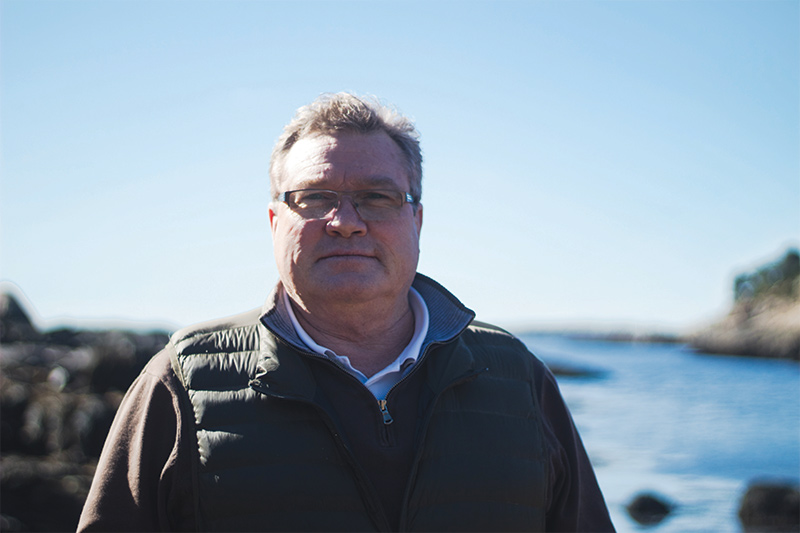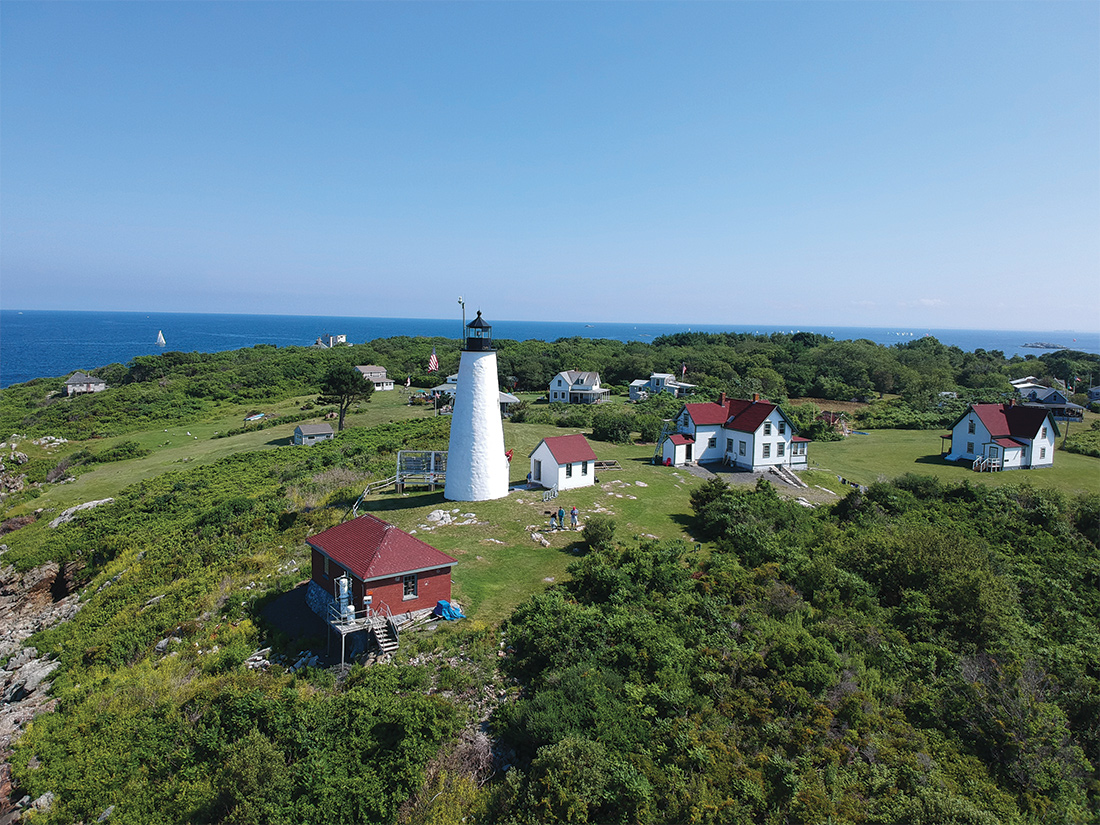Some people wish upon a star. Martin Nally wished upon a lighthouse. From his modest home in Manchester-by-the-Sea, where he and his wife were raising two young boys, the 30-something mason would gaze at Bakers Island Light in the waters leading to Salem Harbor and wonder whether his ship would ever come in.
Then, in 1996, shortly before his 40th birthday, came the first of a 20-year spate of invitations to bid on the restoration of lighthouses up and down New England. The iconic structures had largely outlived their preeminence as way-finding stations, but their architectural and cultural significance landed them on the National Register of Historic Places. Their owner, the United States Coast Guard, wanted to fix them up, and in many cases, offer them to nonprofits that could continue to preserve them.
Nally drew up a detailed proposal, and the company where he worked at the time won the first bid, which, serendipitously, was to restore Bakers Island Light.
“This lighthouse was really near collapse,” says the Coast Guard’s architect on the project, Marsha Levy. “All of the lighthouses are in very exposed places with the worst of what coastal construction has to resist,” she says. “They’re subjected to very, very harsh forces of nature.” But the lighthouse on Bakers Island “was the worst one I’d ever seen,” she comments. “I could almost stick my arm all the way through a massive crack to the inside.

“I knew I had to find a really good mason,” Levy recounts. “We evaluated a number of proposals. Marty impressed us.”
Once chosen, he got to work, taking out pieces of stone, and as he put them back in, re-mortaring them and blowing out all the sand with compressed air. The structure was solid anew.
“We then worked with Marty for a number of years,” Levy says. “We were always happy when he got involved. We knew we’d have somebody who’d get the job done right.”
Nally in fact coaxed life back into about a dozen lighthouses for the Coast Guard—from Brant Point Light on Nantucket to Point Judith Lighthouse in Rhode Island—and another dozen or so for other organizations. He still goes back to do touch-ups here and there for new owners. He has loved the work.
“Once you get into the history of these lighthouses, you cannot believe how important they were,” he says. “It was your Apple iPhone of a bygone era. It connected you. If you did not have a lighthouse that served your town, you were going to starve to death. A ship with supplies would not risk running aground on the rocks.”
“Every lighthouse is a different work of art,” he notes. For instance, West Quoddy Head Lighthouse in northern Maine, the easternmost structure in the United States, had downspouts in the form of gargoyles that had been removed years earlier. Nally hired an artist to carve wooden gargoyles and then had them cast as rubber molds, into which iron was poured to recreate the forms in all their intricacy.

Joe Tully, the Coast Guard’s inspector for the lighthouse projects, was consistently impressed by that kind of ingenuity. “Marty always wanted to do it the right way,” he says. “He didn’t take shortcuts.”
Adds Tully, “Working offshore is not everybody’s cup of tea. But Marty and his crew were willing to camp out at some of these places rather than spend the day going back and forth in boats. That made them more efficient…being out there for a week at a time, you could get around the weather.”
Nally recalls keeping his crew on site for the restoration of Petit Manon Lighthouse in the Gulf of Maine. “I had to have nine men out there all summer,” he says. “I had to make sure they ate, drank, and smoked and had enough diesel fuel all week. And the work on the lighthouse was pretty rough—more than 100 feet in the air.
“It was majestic—and scary,” he says. “You had the sense out there that you were at the edge of everything.”
Many of the lighthouses had to be scaffolded for working on the masonry, and the lead paint blasted off the original metal of their lanterns, which would then be repainted with unleaded paint. Cast iron staircases inside a number of the structures required repair; windows, doors, roofing, replaced, with heavier materials and tools sometimes dropped off by helicopter. “It all had to be the way it was 200 years ago,” Nally says. “You don’t go to Home Depot and buy this stuff.”
Now in his sixties and still living on the North Shore, Nally completed his last full-scale lighthouse renovation on Martha’s Vineyard a few years ago. “I kind of had to stop doing them,” he says. “Too brutal.”
That’s okay. He took his boat out to work on what architectural historians call “America’s castles” more times than anyone can count, and because of that, his ship has most definitely come in.
For more information, visit bakersislandlight.org.

